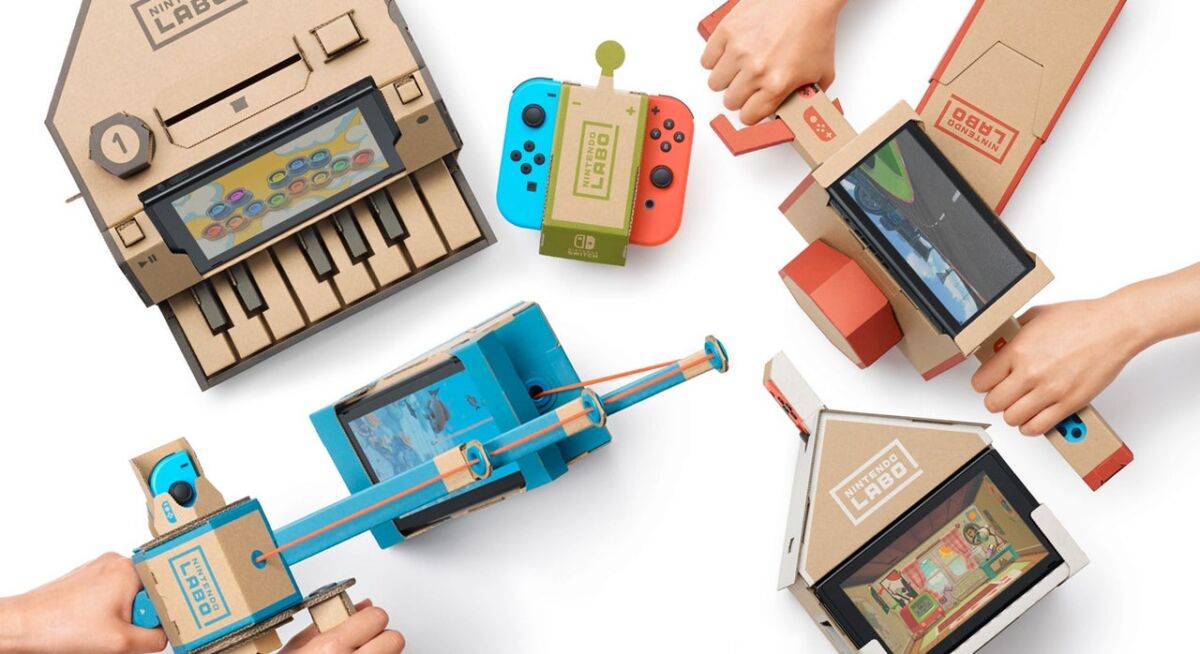Nintendo is no stranger to unusual and innovative ideas for play. From the Virtual Boy to the Wii to the Switch, the company has regularly experimented with ways to bring its audiences new experiences, to varying degrees of success. The Switch in particular has gone on to become one of Nintendo’s most successful systems ever, sitting just behind the Nintendo DS. An astonishing 11,000 games are available for the console, and the best of them will go on to be fondly remembered for decades to come.
But among its massive and ever-growing pile of quality games (and the equally massive pile of articles on those games and the system itself), little has been said about Nintendo Labo.
Just over a year after the Switch’s debut, the company presented one of the most novel experiments in its history in gaming. Born from an internal survey on how the Joy-Con could be used, Labo was envisioned to broaden the Switch’s appeal beyond the hardcore audience. The premise was — in this increasingly digital era of gaming — as wild as they come: players would use the included sheets of cardboard to assemble a variety of creations, all of which would interface with the Joy-Con and Switch console.
As with any project, particularly one geared towards younger, casual audiences, this was not an easy feat. Developer interviews described a rigorous — and at times, upsetting — trial and error process, even more so when it was later decided that absolutely no cutting or gluing would be required to assemble each Toy-Con. The end result was something that, as Nintendo themselves put it, could only be done on the Switch.

The project itself was released as software for the Switch, accompanied by pre-made cardboard cutouts for users to assemble. The software included assembly instructions, as well as a variety of games that demonstrated the Toy-Con kits in action. Each creation also made use of the Joy-Con’s features in clever ways; the car Toy-Con, for example, was able to move through the use of the controllers’ vibrations. The Toy-Con piano, meanwhile, made use of the IR sensor to detect which keys were being played. Perhaps the most impressive Toy-Con was the Robot Kit, which saw users assemble a visor and backpack, designed to take control of a giant robot to rampage across a city via motion controls.
Four total kits were released over the course of 2018 and 2019, with concepts ranging from the aforementioned toy cars and mecha suit, to VR Goggles. Beyond that, the Labo software also has a Toy-Con Garage feature, allowing users to create their own projects by repurposing existing Toy-Con kits, or using their own materials.
And it’s Toy-Con Garage that’s perhaps the most impressive part of Labo; it’s the defining factor that sets it apart from Nintendo’s past experiments on new ways of play. A simple “if-then” programming system makes it easy and approachable for anyone to pick up, but the possibilities are endless. People have created things like accordions, vending machines, and even a recreation of the 1980 Game & Watch game Fire. It’s this flexibility and room for creativity that should have, on paper (or cardboard?), given Labo a much longer lifespan in the public consciousness, even after Nintendo stopped releasing new kits.
Sadly, the world has mostly moved on from Nintendo Labo. A year after its debut, it’d only sold a million copies, and though Nintendo made efforts to bring Labo to elementary schools in late 2018, there simply hasn’t been that much buzz since then. And despite the potential of Toy-Con Garage, the Labo subreddit community has been sedate for years at this point.

This has been chalked up to a variety of factors, from confusing naming conventions, the price tag, to simply just not resonating with the audiences that preferred the more straightforward plug-and-play experiences of console gaming. Labo was geared towards younger audiences from the outset, and while the possibility of complex kits for older audiences was noted, nothing of the sort ever materialized. Outside of the Toy-Con Garage itself, the included minigames lacked substance and staying power.
Nintendo’s lack of long-term support didn’t help matters. The final Labo Kit, VR, was released in 2019, and outside of a few big titles like Breath of the Wild receiving updates to support it, not much was done with Labo VR. And despite Labo’s potential as a whole, it never did receive any further kits or large-scale games that took full advantage of what it was capable of. Perhaps asking prospective players to assemble a full cardboard kit for a new Zelda or Mario would’ve been too much, but as it stands, Nintendo and the playerbase alike moved on from Labo before it had a chance to truly take off.
Though Labo died too soon, its legacy did leave us with one more release. 2021 saw the debut of Game Builder Garage, which allowed users to create games using a visual programming language. In an interview, Director Naoki Masuda cited Labo as the inspiration behind Game Builder Garage. And like Labo and Toy-Con Garage before it, the player base took to it quite well, with impressive recreations of retro games like Super Mario Kart and Sonic the Hedgehog.
Some people still carry a torch for Labo, though, and a successor to the Nintendo Switch has to arrive eventually, given that we’re seven years into its lifecycle. There’s no guarantee that Labo will make a return with it, but Nintendo will almost certainly experiment with new ways to play again — it’s in their DNA. And if their next unorthodox project does turn out to be a successor to Labo, then maybe Nintendo’s cardboard creations will have a better chance at captivating the world the next time around.
READ NEXT: Nintendo 64DD: Why Nintendo’s Forgotten N64 Add-On Failed
Some of the coverage you find on Cultured Vultures contains affiliate links, which provide us with small commissions based on purchases made from visiting our site.

